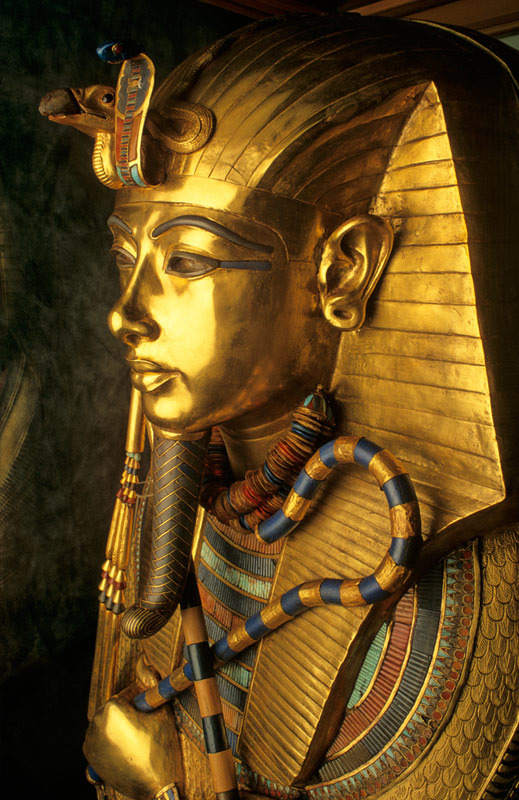Photo

Tomb of Rekhmire
Musicians playing the harp and lute, detail of a wall painting in the Tomb of Rekhmire (TT100), a vizier of Thutmose III and Amenhotep II. New Kingdom, mid-18th Dynasty, around 1450 BC. Sheikh Abd el-Qurna, West Thebes.
431 notes
·
View notes
Text
HYMN TO THE GODDESS HATHOR - from Her Temple at Nitentóre/Dendera
(cfr. Dendera I-80)
" .... Lady of names in the Two Lands,
Unique-one,
Lady of awe among the Guardian-Gods,
the Uraeus on the horns of Atum.
The Gods come to You prostrating,
the Goddesses come to You bowing Their heads.
Your Father Ra adores You, His face rejoices in hearing Your Name.
Thoth satisfies You with His glorifications, and He raises His arms to You, carrying the sistrum.
The Gods rejoice for You when You appear.
You illuminate the Two Lands with the rays of Your Eye.
The South, the North, the West, and the East pay You homage, making adorations to You.
Hathor, Lady of Nitentóre, Your beautiful face is pleased by the King of Upper and Lower Egypt."
[capital of a column representing the Goddess Hathor with cow's ears; Her hairs are decorated with eight flowers. Dated to the III century BCE. Now in the Louvre Museum... ]
#iregipto #egyptpassion #discoveregypt #thisisegypt #egypt #MBPlanet #egypt
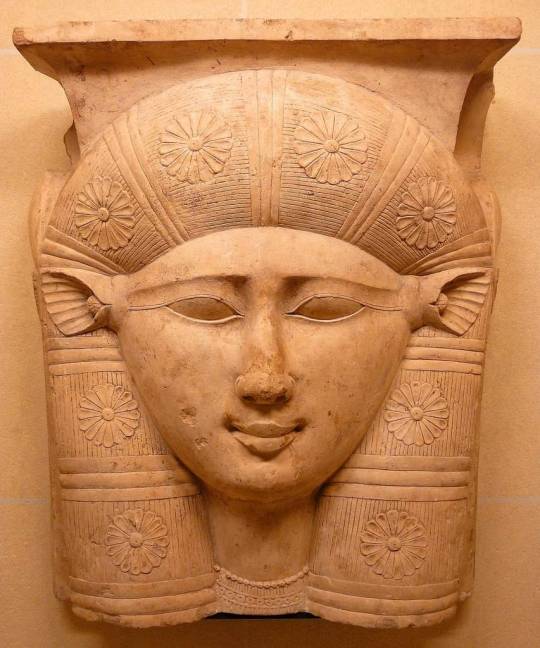
57 notes
·
View notes
Photo
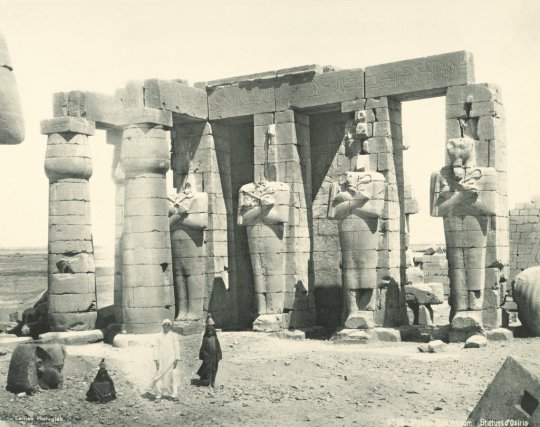
Ramesseum, the memorial temple of Pharaoh Ramesses II, Theban Necropolis, Upper Egypt, 1870
639 notes
·
View notes
Photo
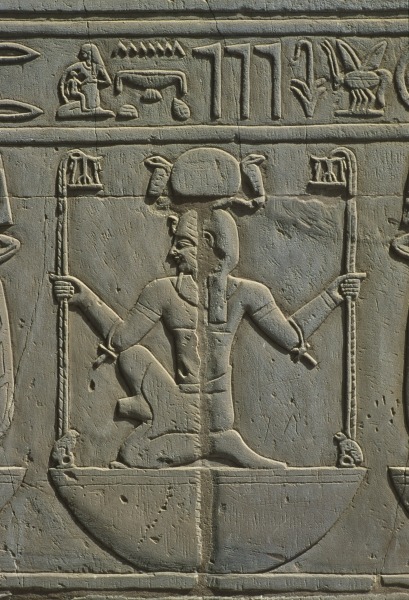
Relief of God Heh
High relief depicts god Heh, spirit of the million years, personification of infinity or eternity in the Ogdoad in Egyptian mythology. Detail of a wall carving from the Double Temple of Sobek and Haroeris, Kom Ombo. Temple of Kom Ombo.
403 notes
·
View notes
Photo

Procession of hunters; clapnetting scene, Metropolitan Museum of Art: Egyptian Art
Rogers Fund, 1926 Metropolitan Museum of Art, New York, NY
Medium: Limestone, paint
http://www.metmuseum.org/art/collection/search/565095
12 notes
·
View notes
Photo

Thutmose IV peristyle hall at Karnak
For more Egypt content, follow us on Instagram.
80 notes
·
View notes
Photo

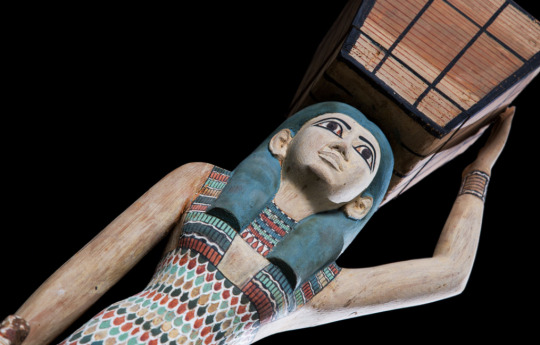
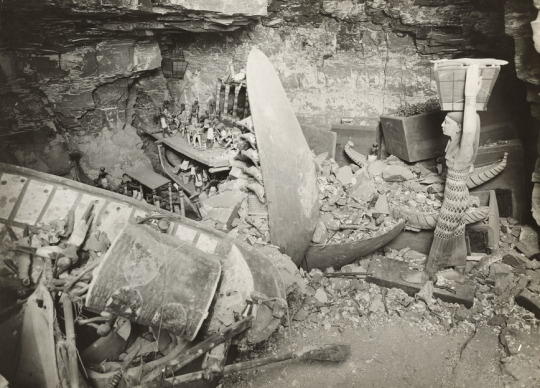
Statue of an Offering Bearer - painted wood - Early Reign of Amenemhat I - Dynasty 12, Middle Kingdom, Egypt - c.1981-1975 BCE
517 notes
·
View notes
Photo
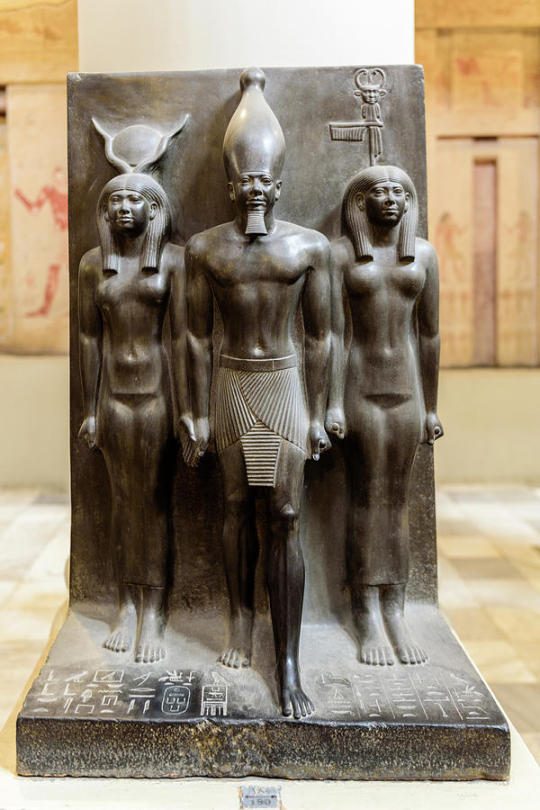
Triad of King Menkaure
This sculpted triad, a three-person statue, shows King Menkaure between two ladies. The goddess Hathor is on his right and the personification of Cynopolis, the 17th nome of Upper Egypt, is on his left. He wears the crown of Upper Egypt and has a false beard. He wears the short pleated Shendyt kilt and holds two small cylindrical objects.
The two ladies wear tight fitting dresses and have three-part wigs. They each hold in one hand the Shen sign of power and embrace the king with the other hand. Hathor wears her usual crown, composed of the sun disk between the two cow horns, while the other lady is placed beneath a jackal, the symbol of her nome. The text engraved on the base identifies them and records the different offerings given to the king from the nome.
Old Kingdom, 4th Dynasty, ca. 2613-2494 BC. This object was excavated by the Harvard University–Boston Museum of Fine Arts Expedition. Now in the Egyptian Museum, Cairo. JE 46499
638 notes
·
View notes
Photo
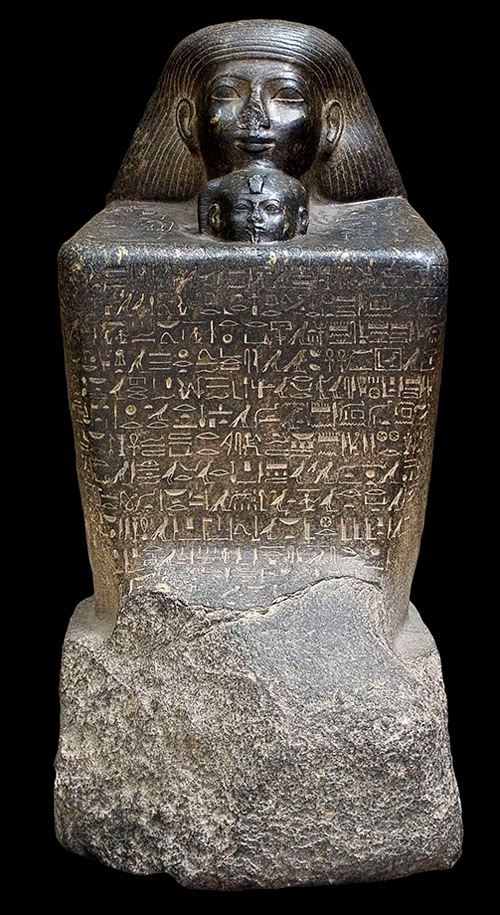
Statue of Senenmut and Neferure
More than 20 statues depicting Senenmut, the most favored and influential person during the reign of Queen Hatshepsut, were found in the Karnak cache. Eight of them portray Senenmut with Princess Neferure, the daughter of Queen Hatshepsut.
This statue shows the nobleman with the features of a young man: full cheeks in a smooth round face, wide-open eyes with long lashes executed in relief, large ears, and a small, straight, full mouth.
As Senenmut was her tutor, the princess’ head emerges from his mantle. An indication of her position as heiress to the throne, the child wears her hair in the pleated tress characteristic of royal children, ornamented with the uraeus. Her name, inscribed within a cartouche next to her head, is preceded by the title “god’s wife,” most probably Amun-Re.
This honorary and religious title began to be born by unmarried princesses from now on and was wide spread in the Late Period. The sides of the statue were ideal for a long text, listing Senenmut’s numerous titles and functions in connection with the palace and with the cult of Amun.
Granite. New Kingdom, 18th Dynasty, reign of Hatshepsut, ca. 1478-1458 BC. Now in the Egyptian Museum, Cairo. JE 37438
195 notes
·
View notes
Photo

Canopic Jar Possibly for Kiya, Secondary Wife of Akhenaten
The canopic jars is used to store organs after mummification, it was believed, would be needed in the afterlife. This canopic jar is one of four found in the mysterious Tomb (KV55) in the Valley of the Kings, it is possible that it was originally made for Meritaten, Akhenaten’s daughter, who may have married the enigmatic King Smenkhkare, though many now assign it to Kiya, or even Smenkhkare himself.
Made of alabaster. New Kingdom, 18th Dynasty, Amarna Period, reign of Akhenaten, ca. 1353-1336 BC. Now in the Egyptian Museum, Cairo. JE 39637
258 notes
·
View notes
Photo
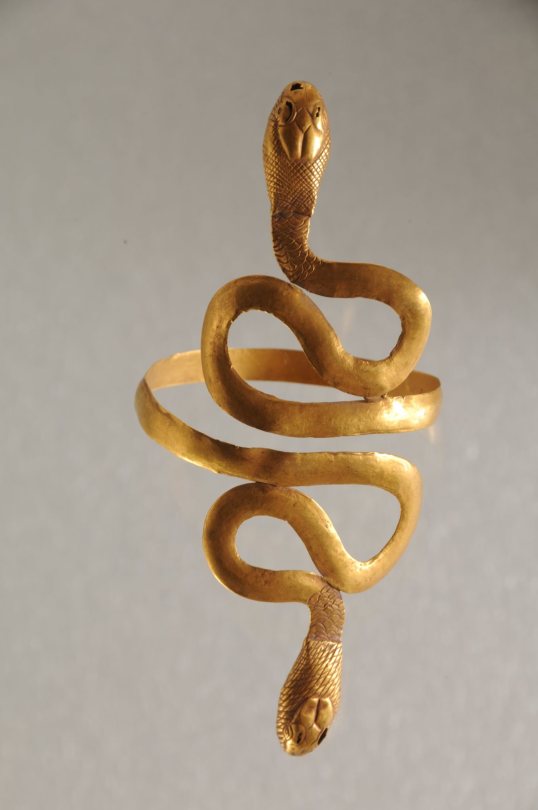
Asymmetrical Bracelet with Snake Heads
Made of solid gold. Found in East Delta. Ptolemaic or Roman Period. Now in the Egyptian Museum, Cairo.
672 notes
·
View notes
Photo

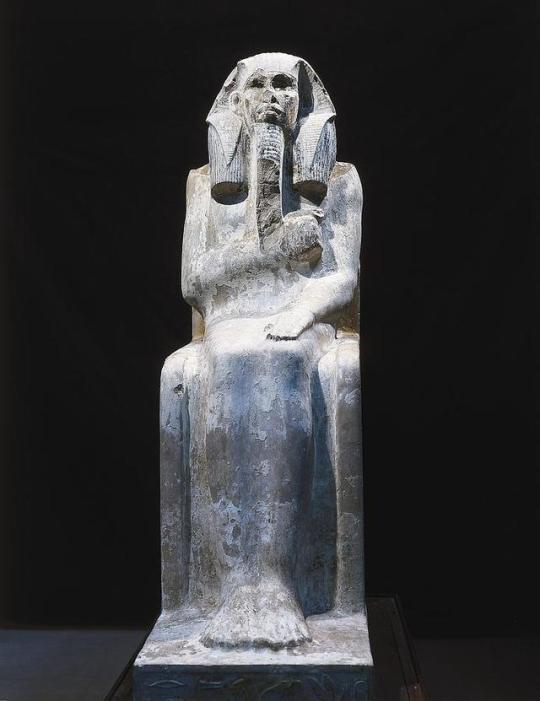
Seated Statue of King Djoser
This statue, found in a closed room called Serdab, northeast of the funerary complex of King Djoser at Saqqara, is the oldest known life-size statue in Egypt. It depicts King Djoser himself, seated on his throne and enveloped in a jubilee cloak. The statue was entirely coated with white plaster and painted. The deep-set eyes were once inlaid.
The king has a ceremonial false beard and wears a black wig topped by the royal Nemes headdress. The front side of the pedestal is inscribed with hieroglyphic text, indicating the name and epitaphs of King Nethery-khet of Upper and Lower Egypt.
Old Kingdom, 3rd Dynasty, ca. 2686-2613 BC. Now in the Egyptian Museum, Cairo. JE 49158
893 notes
·
View notes
Photo
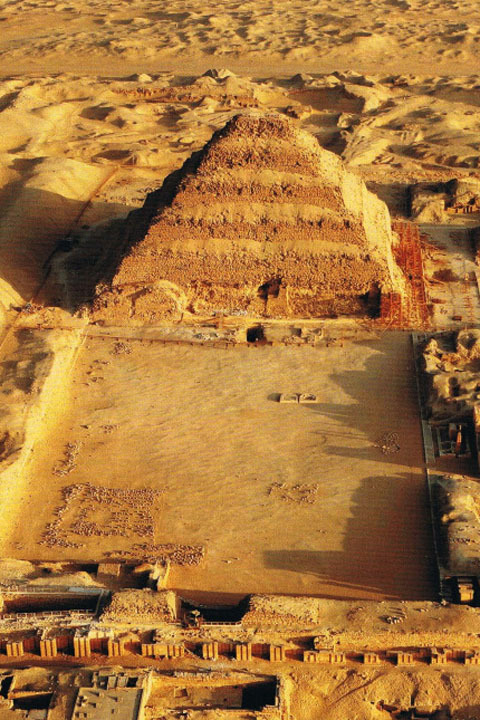
The (step) Pyramid of Djoser (c. 2667–2648 BC) in Saqqara necropolis, Egypt.
182 notes
·
View notes
Photo

High relief stele decorated with three female figures named Ta-di-Imhotep (greywacke), from the Serapeum of Saqqara. Late Period, 30th Dynasty, ca. 380-343 BC. Now in the Louvre.
324 notes
·
View notes
